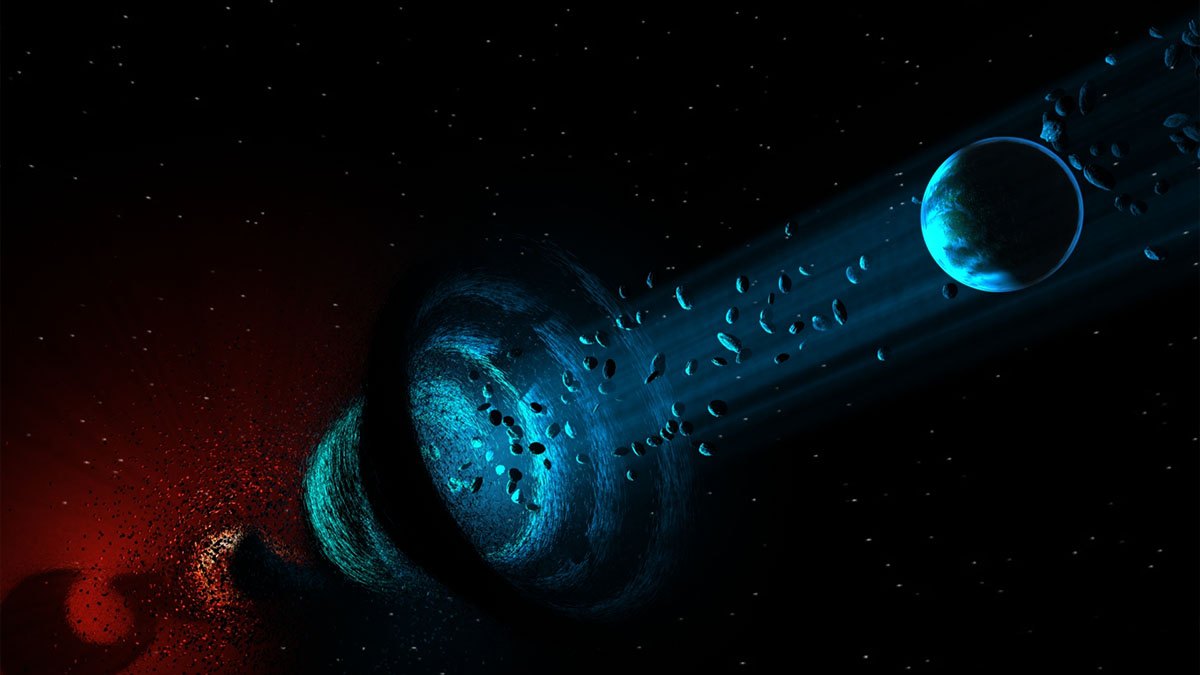arxiv stuffs a wormhole with perfect fluids

Some bloggers just can’t resist going back to the same rich source of things just begging to be really torn into and dissected, and I’m no exception. After growling about the papers being posted and promoted on arXiv, I still find myself going through some of the more bizarre and out of left field proposals which want to solve the mysteries of the cosmos with elaborate theoretical numerology, taking any little stellar wobble or statistically negligible pattern in different maps of the night sky, and turning it into a sign of radical phenomena shaping the universe from tiny dimensions wrapped into the fabric of space well beyond our view, while using only big, elaborately tortured equations which often verge on pure numerology as proof. In one paper, the authors went so far as to say that the universe will end in a few billion years because their mathematical projections for future events seem to be off, essentially basing their thesis on the idea that when their math runs out, so will the universe because, well, their math is more important. But hey, at least they didn’t tear the fabric of space to then fill it with a mystery fluid that lets wormholes hide inside stars, like a recent arXiv offering.
That’s right, a quartet of theoreticians decided that we could have a wormhole filled with exotic matter which is going to behave like a perfect fluid and could fit right into the cores of stars, uniting binary star systems with a bizarre, invisible link across space and time. If you remember my last post about the turbulent dynamics of wormholes and their inherent instability, you may find yourself wondering how the hell one of these tunnels through the very fabric of the cosmos could ever form inside a giant ball of plasma, and unfortunately, neither the authors or I have an answer for you. You see, the paper pretty much begins with the assumption that you’ll be able to find a wormhole filled with an unspecified fluid and if you run the scenario through a few equations, it seems like you could hide the throat of this wormhole in a star without causing much of a stir. I suppose the little details of how puncturing space and time, which requires energy densities well beyond those of massive hypernovae, would leave a star intact, and how having a churning wormhole with an event horizon similar to a black hole placed inside a stellar core, presumably cutting off the normal fusion process would keep the star shining just like it normally would, are best left to others to quantify and develop into realistic models.
Now, we could also note that a perfect mystery fluid needs to be identified and actually seem to exist before it gets fed to a wormhole, but take away this magical fluid and we’d have no paper left to discuss. And this once again brings up my biggest problem with the majority of arXiv papers that generate so much buzz online. They have few to no foundations in observational or experimental physics and rely so heavily on narrow scenarios, exotic mathematics, and shifting the burden of finding tangible proof to future projects intended to be done by someone else, we end up with a stream of work that seems kind of neat, but is really quite meaningless and inconsequential. I understand the idea of exploring and asking questions, and I respect that the theoreticians do the requisite math to get some idea for how their latest hypothesis will play out. However, when that idea is based on a what if scenario which ignores pretty much all the pertinent details, maybe it’s a good idea to stop and ask yourself if it really makes sense to put a lot of time and effort into a dead end.
See: V. Dzhunushaliev, V., et al. (2011). A Star Harbouring a Wormhole at its Center arXiv: 1102.4454v1





